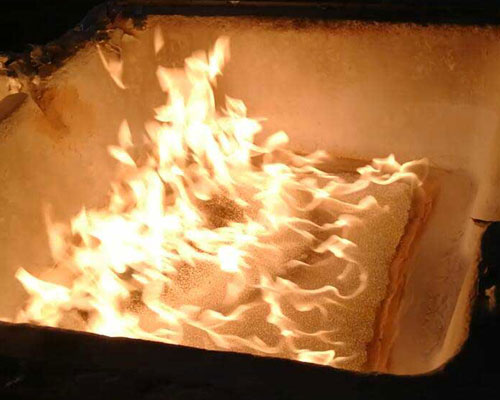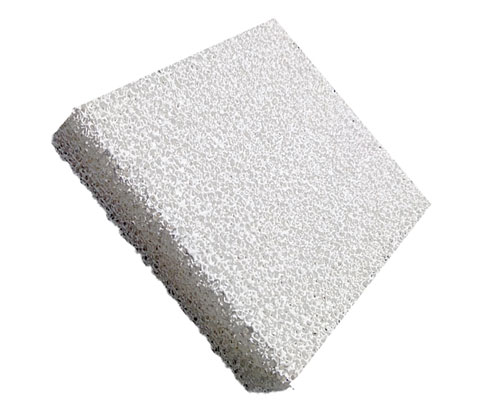Non-metallic inclusions in the aluminum melt will cause surface streaks and pinholes during the aluminum foil rolling process. Surface streaks are also the allowable defects of high-grade PS plate base. In order to meet the needs of high-end aluminum foil blanks and PS plate bases, reducing non-metallic inclusions in aluminum melts and detecting the size and distribution of metallic inclusions in aluminum melts has become an important transformation in aluminum foil production. The purpose of filtration is to remove non-metallic inclusions in the aluminum melt. In casting and rolling production, most manufacturers use this ceramic foam filter filtering method.
The characteristics of the AdTech ceramic foam filter are easy to use, low initial pressure head, better filtering effect, and relatively cheap price, so it has been widely used. At present, the commonly used aluminum melt CFF filtering device is a double-layer porous ceramic filter plate. The filtering effect depends on the gradual passage of the aluminum melt through the filter plate, the combination of the number of holes in the single-layer filter plate and the number of holes in the double-layer filter plate.

In production practice, filter materials with different pore sizes can be selected, and the installation method of the filter can be changed to change the kinetic parameter coefficient of filtration. Choose filter materials of different thicknesses to change their ability to capture inclusions. Using filter materials with different pore diameters, a reasonable combination from large pores to small pores, that is, at the same time change the filter parameters and increase the filter thickness, the number of filter stages, and strengthen the ability to capture inclusions. Increase the cross-sectional area of the flow, reduce the flow rate of the melt, increase the probability of capturing inclusions, etc., to improve the filtering effect and achieve the required goal.

